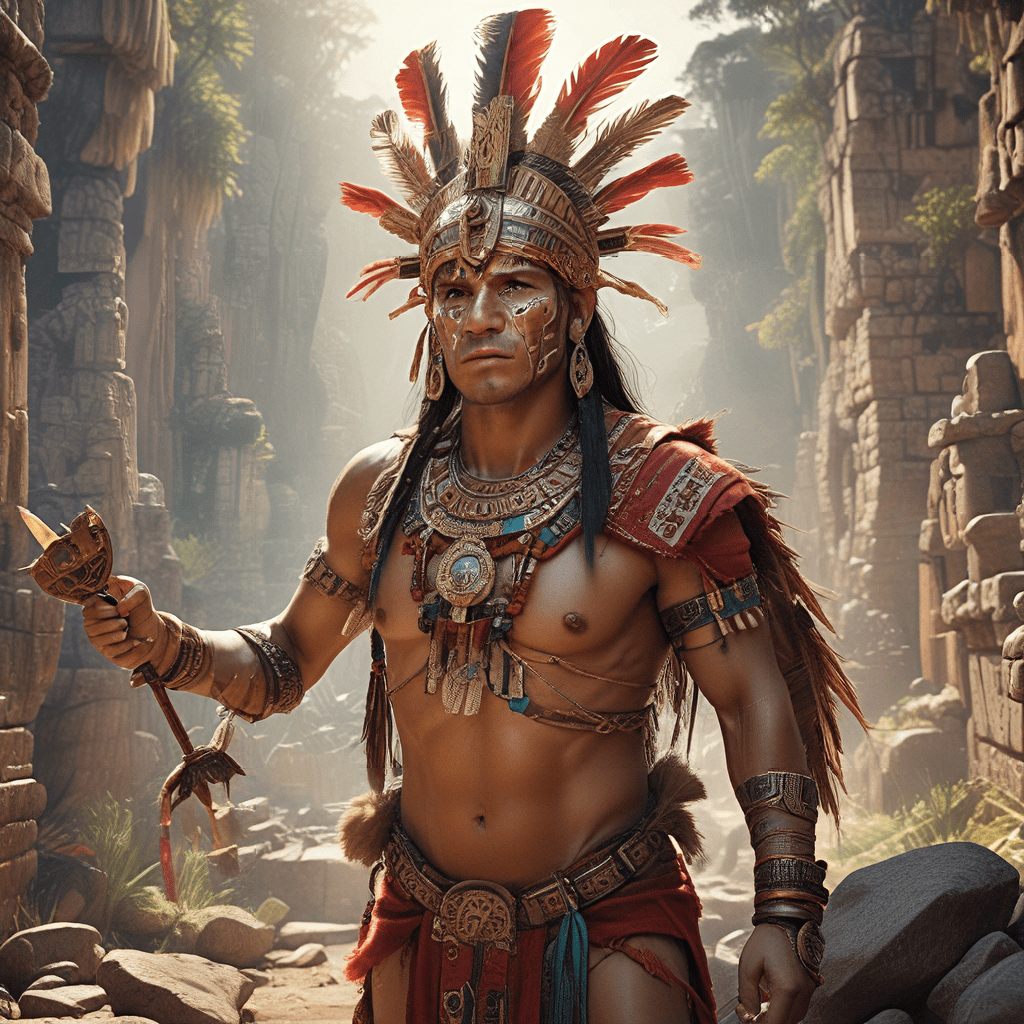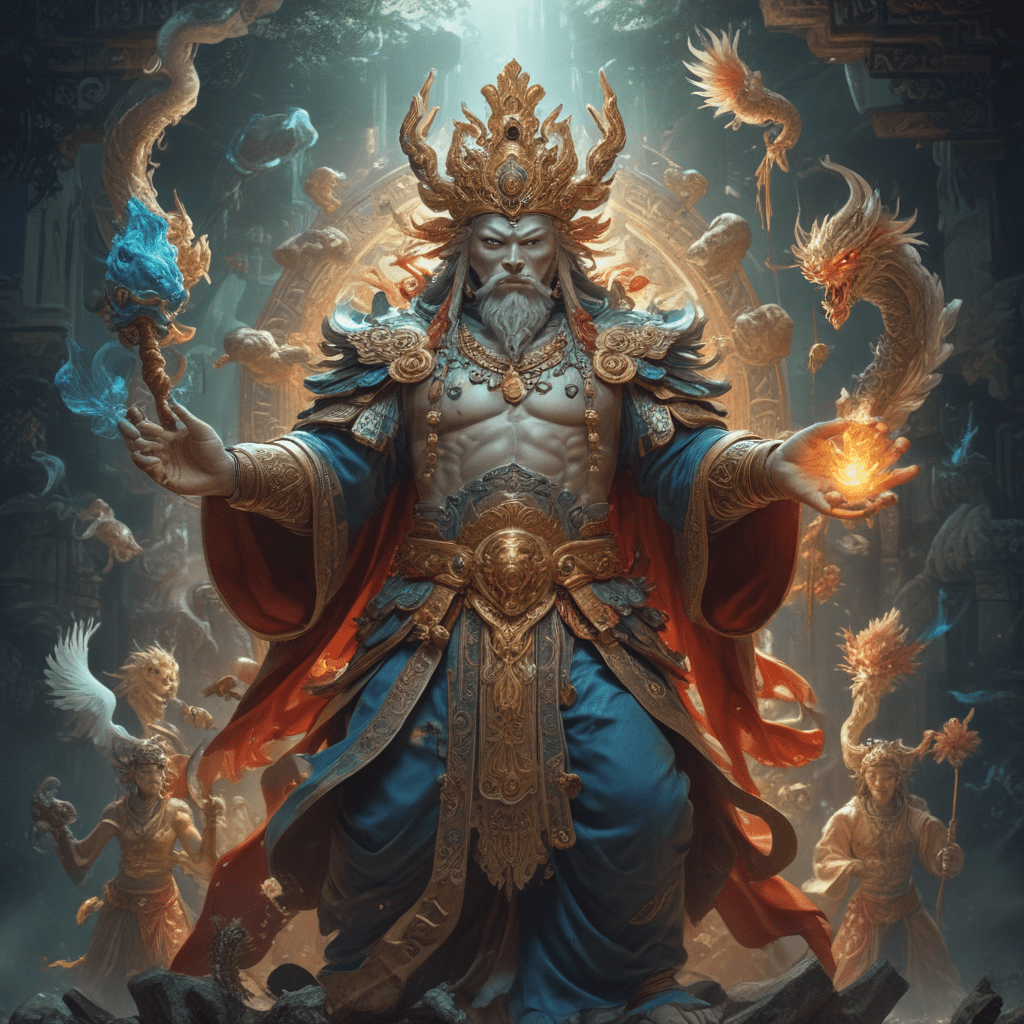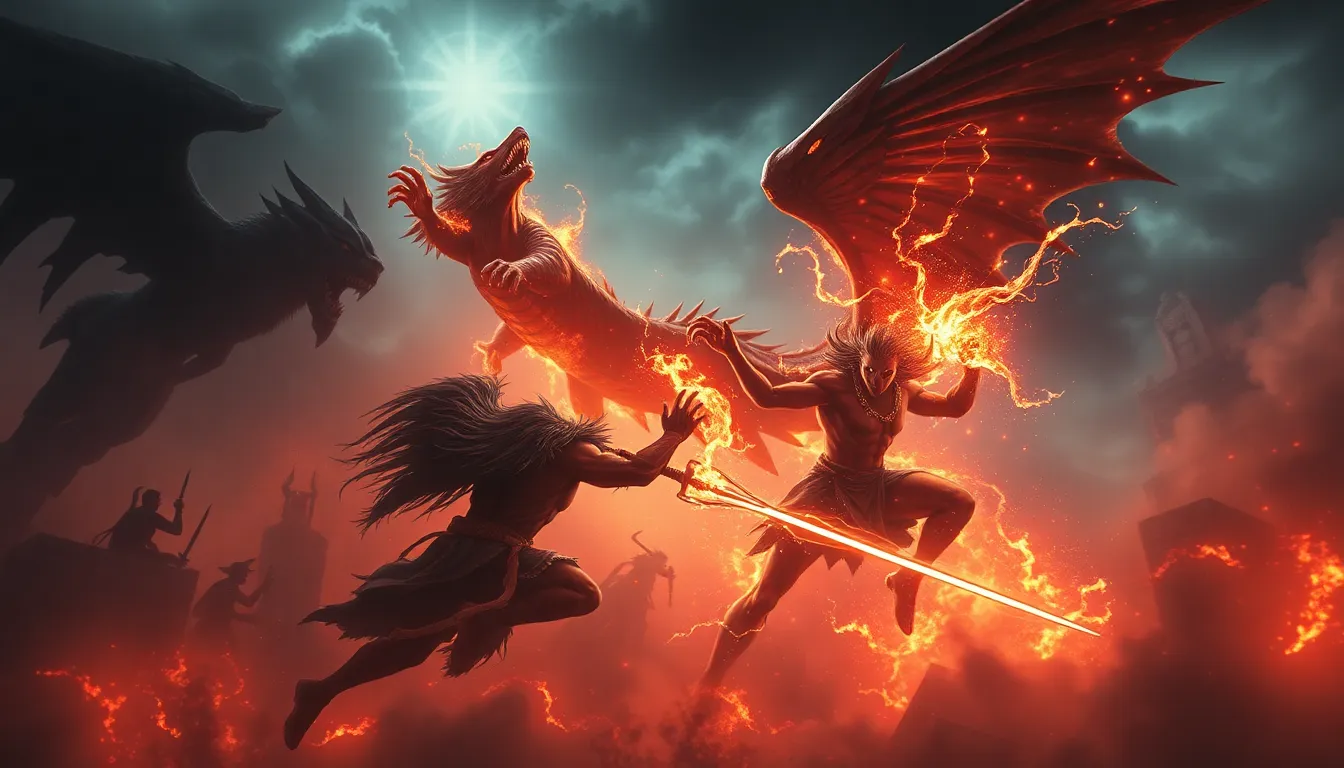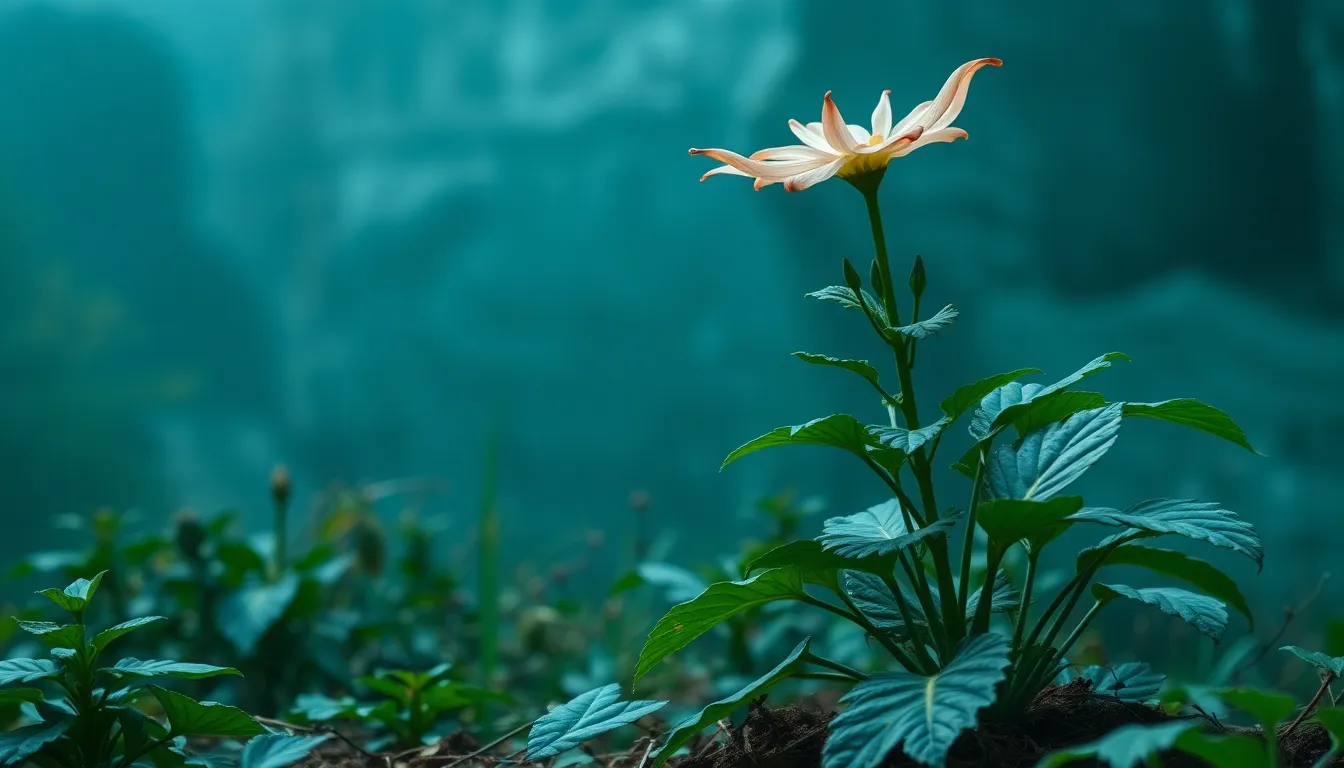The Inca’s Cosmic Struggle: Conquering the Chaos
The Inca Empire, known for its impressive architectural achievements and sophisticated societal organization, was also deeply intertwined with a rich tapestry of mythological beliefs. Central to their worldview was the concept of an ongoing cosmic struggle, a battle between order and chaos, light and darkness, and creation and destruction. This belief permeated every aspect of Inca life, from their daily rituals to their grand ceremonies and, most importantly, their approach to warfare.
The Inca believed that the universe was created and maintained by powerful deities, each with their own distinct roles and responsibilities. These deities were not merely abstract concepts but living forces that influenced every facet of their lives. Warfare, for the Inca, was not simply a tool for territorial expansion or conquest but a sacred duty, a way to honor the gods and maintain order in the cosmos.
The Sun God Inti: The Divine Warrior King
Inti, the Sun God, was the most important deity in the Inca pantheon. He was revered as the creator of the Inca people, the giver of life and warmth, and the ultimate source of power and authority. Inti was also seen as a fierce warrior, a divine king who fought against the forces of chaos and darkness.
The Inca emperors claimed to be descendants of Inti, considered living embodiments of the Sun God. Their role as rulers was seen as a divine mandate to defend the empire, uphold justice, and ensure the continued well-being of their people. This belief in the divine right of kings also shaped their approach to warfare. Their military campaigns were seen as acts of cosmic justice, a way to restore balance and order to the world.
The Viracocha Myth: Creation and Cosmic Warfare
The Viracocha creation myth is a fascinating example of the Inca's understanding of warfare as a cosmic struggle. Viracocha, the creator god, is depicted as a powerful and benevolent deity who emerged from Lake Titicaca and then created the world and its inhabitants.
However, Viracocha did not initially create humans in their current form. Instead, he first created giants who were rebellious and chaotic. These giants threatened to disrupt the order Viracocha had created, so he destroyed them in a great flood. From the remnants of the giants, Viracocha then created the current human race.
This story illustrates the Inca's belief that even the creator god had to engage in warfare to establish order and ensure the survival of humanity. It also emphasizes the importance of maintaining order and resisting chaos, a theme that resonated deeply in Inca military strategies.
The Pachamama: Mother Earth and Her Protective Powers
Pachamama, the Earth Mother, was another important deity in the Inca pantheon. She was seen as the embodiment of the earth, providing sustenance and fertility to all living beings. Pachamama was also believed to be a powerful force who could protect her children from harm.
The Inca believed that Pachamama could intervene in battles, helping their warriors in their struggles against their enemies. They often made offerings to Pachamama before going into battle, asking for her blessings and protection. They also believed that Pachamama could punish those who violated her sacred laws, such as the misuse of natural resources or the desecration of the earth. This belief added a spiritual dimension to their military campaigns, making warfare not only a political act but also a religious duty.
The Apus: Mountain Spirits and Guardian Deities
The Apus, the mountain spirits, were revered as powerful deities who guarded the Inca Empire. They were considered the protectors of the land, the source of water and fertility, and the arbiters of justice.
The Inca believed that the Apus were intimately connected to the land, the weather, and the fate of the empire. They made offerings to the Apus before embarking on military campaigns, asking for their blessings and guidance. The Apus were also believed to have the power to bring victory or defeat to their warriors, depending on the outcome of their battles. This belief reinforced the spiritual dimension of Inca warfare, making it a cosmic struggle not just for territorial expansion but for the favor of the gods.
The Supay: The Underworld and the Forces of Darkness
The Supay, the god of the underworld, represented the forces of chaos and darkness that threatened the Inca world. He was believed to be a powerful and dangerous deity, constantly seeking to disrupt the order established by the creator gods. The Inca believed that the Supay could influence events in the world of the living, causing disease, famine, and war. They feared the Supay and made offerings to appease him, hoping to avoid his wrath.
The Inca's belief in the Supay deeply influenced their approach to warfare. They saw their enemies as representatives of the dark forces of the underworld, forces that threatened the order and well-being of their society. The Inca believed that by defeating their enemies, they were also combating the forces of the Supay and maintaining the balance of the cosmos.
Ritual Warfare: Offerings and Sacrifice to the Gods
Inca warfare was deeply intertwined with religious rituals and ceremonies. Before going into battle, Inca warriors would make offerings to the gods, asking for their blessings and protection. They would pray to Inti, the Sun God, for strength and victory, and they would offer sacrifices to Pachamama, the Earth Mother, to appease her and ensure her favor.
The Inca believed that the gods could influence the outcome of battles, and they made every effort to win their favor. They would offer precious objects, such as gold and silver, to the gods, and they would even perform human sacrifices in extreme cases. These sacrifices were not merely acts of barbarism but were seen as a way to appease the gods and ensure their support in the coming conflict.
The Symbolism of Warfare: Weapons and Armor as Ritual Objects
The Inca's weapons and armor were not merely tools of war but were also imbued with religious significance. Their weapons, such as clubs, spears, and slings, were often adorned with intricate carvings and designs that represented the gods and their attributes. Their armor, made from leather and metal, was also decorated with symbols and motifs that reflected their beliefs.
The Inca believed that these symbols had the power to protect them in battle, giving them strength and courage. The weapons and armor were seen as extensions of the gods, helping the warriors to fight with divine power.
The Inca’s Strategies: Using Myth to Unite and Conquer
The Inca's mythological beliefs had a profound impact on their military strategies. The Inca believed that their wars were divinely sanctioned, a way to establish order and justice in the world. This belief gave them a sense of purpose and conviction, inspiring them to fight with courage and determination.
The Inca also used their mythology to unite their people. They told stories of their ancestors, their divine heroes, and their struggles against the forces of darkness. These stories helped to create a shared sense of identity and purpose, inspiring loyalty and devotion to the empire.
The Lasting Legacy: Warfare and Mythology in Modern Andean Culture
The Inca Empire may have collapsed centuries ago, but its legacy continues to resonate in the Andes today. Modern Andean culture is still deeply influenced by the Inca's mythological beliefs, including their beliefs about warfare and the cosmos.
The Inca's stories of their gods and heroes continue to be told and retold, passing down from generation to generation. The Inca's belief in the sacred nature of the earth, the power of the mountain spirits, and the importance of maintaining balance in the cosmos are still evident in Andean culture. The Inca's approach to warfare, as a way to honor the gods and maintain order in the world, continues to influence the way that Andean people view conflict and violence.
FAQ
1. Did the Inca actually believe in their mythology or was it just propaganda? There is no way to know for sure whether the Inca believed in their mythology. However, the fact that their beliefs were so deeply embedded in their culture and their way of life suggests that they were very real to them.
2. What were the Inca's most effective military strategies? The Inca's military strategies were based on their mythology and their understanding of the terrain. They were known for their use of surprise attacks, their ability to quickly mobilize large numbers of troops, and their mastery of mountain warfare.
3. How did the Inca's mythology influence their art and architecture? The Inca's mythology is clearly evident in their art and architecture. Many of their buildings and sculptures depict scenes from their myths and legends. Their art also often incorporates symbols and motifs that represent the gods and their attributes.
4. How did the Inca's mythology influence their society? The Inca's mythology had a profound influence on their society. Their beliefs shaped their social structure, their rituals, and their laws. They believed that the gods had ordained a specific social order, and they strived to maintain it.
5. What can we learn from the Inca's mythology? The Inca's mythology provides us with valuable insights into their worldview and their understanding of the cosmos. Their stories teach us about the importance of maintaining order, the power of the natural world, and the role of the gods in human affairs.




